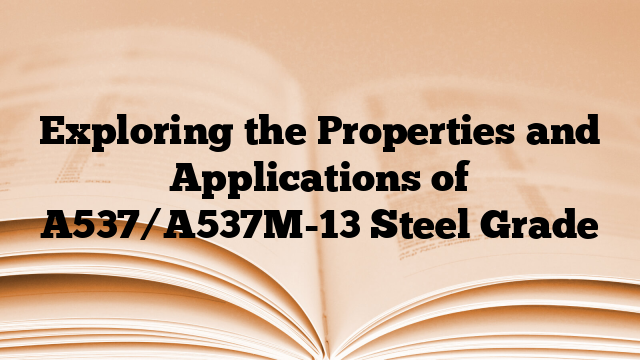The A537/A537M-13 steel grade is a standard specification for pressure vessel plates, heat-treated, carbon-manganese-silicon steel used in the construction of various industrial equipment. It is commonly used in applications where high strength, toughness, and resistance to corrosion and high-temperature environments are required.
The chemical composition of A537/A537M-13 steel grade consists of carbon (max 0.24%), manganese (0.70-1.35%), phosphorus (max 0.035%), sulfur (max 0.035%), silicon (0.15-0.50%), nickel (max 0.25%), chromium (max 0.25%), molybdenum (max 0.08%), and copper (max 0.35%).
The mechanical properties of A537/A537M-13 steel grade include a minimum yield strength of 345 MPa (50 ksi) and a minimum tensile strength of 485 MPa (70 ksi). It also has a minimum elongation of 22% in 2 inches.
This steel grade is commonly used in the fabrication of pressure vessels and is suitable for low-temperature service. It is primarily used in the oil, gas, and petrochemical industries, as well as in power generation plants and other industrial applications that require high-pressure containment.
The A537/A537M-13 steel grade is designed to withstand high temperatures and has excellent toughness and weldability properties. It is capable of withstanding extreme environments and is often used in applications where resistance to stress corrosion cracking and hydrogen-induced cracking is critical.
In summary, the A537/A537M-13 steel grade is a high-strength carbon-manganese-silicon steel designed for pressure vessel construction. Its chemical composition and mechanical properties make it suitable for a range of industrial applications, particularly in high-pressure and high-temperature environments.

